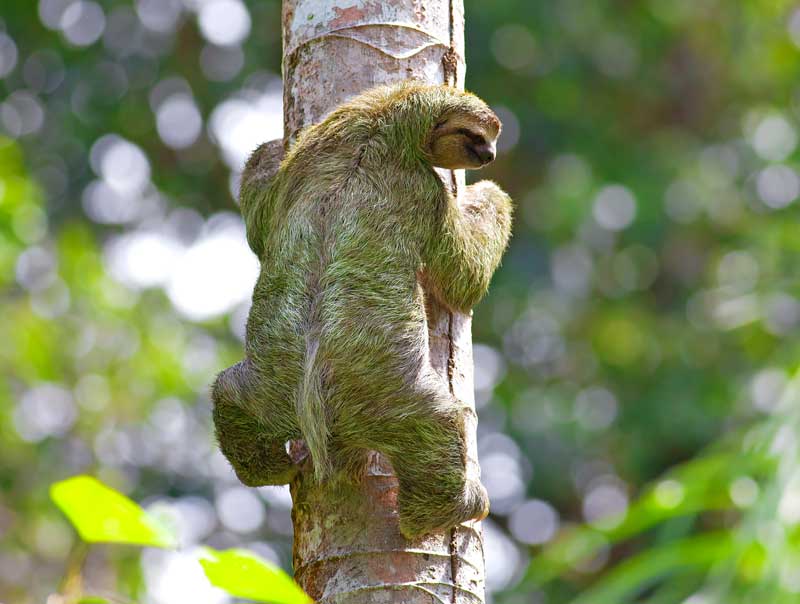|
Did you know sloths are so slow that algae grows on their fur? Well, algae does grow on their fur, but not necessarily because they are slow moving. Sloths have actually formed a symbiotic relationship with the algae. So, sloths actually encourage the algae to grow on their fur. The green color helps camouflage the sloth.
Here's the thing. Mammals can't be green. Why not? Because Mammal hair only has two kinds of pigment: one that creates black or brown hair and one that creates yellow or reddish-orange hair. No green. Unless the mammal gets some help. Sloth hair is long and coarse, and individual hairs have (depending on sloth species) either grooves or cracks that provide the algae a place to grow. What do the algae get out of the deal? Shelter and a good supply of water. In addition to camouflage, the sloths also get additional nutrients that they absorb through their skin from the algae. Scientists have found that each species of sloth hosts a specific type of algae, which doesn't live anywhere else in the world other than on those sloths. Because of this, baby sloths get their supply of algae directly from their mother. It is thought that sloths have had this arrangement with algae for more than 20 million years.
0 Comments
Leave a Reply. |
Stan's Cogitations
Everyone needs a creative outlet. That's why I write. Archives
July 2024
|


 RSS Feed
RSS Feed